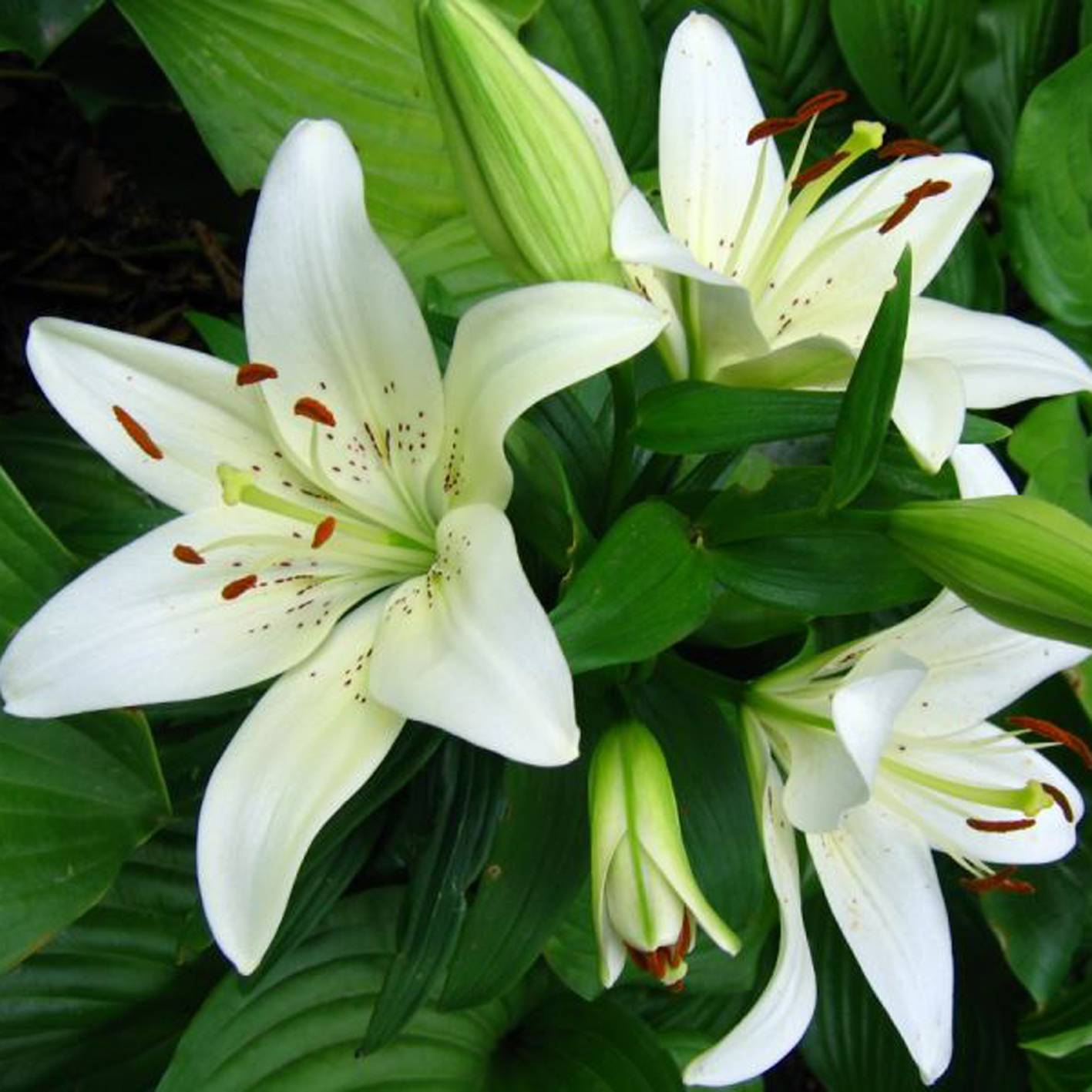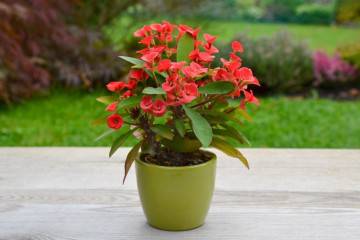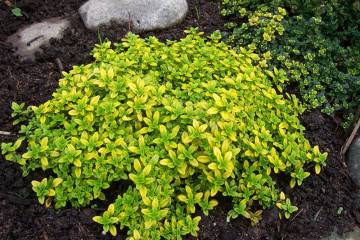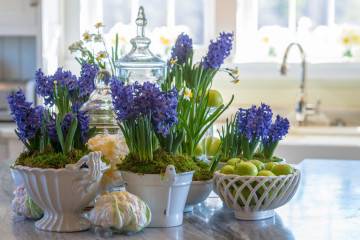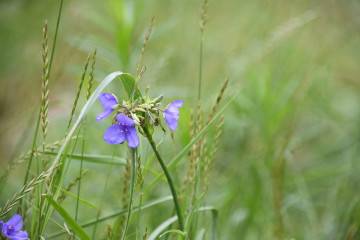Indoor lily or house lily in a pot - how to care
Content:
Lily is a plant belonging to the Liliaceae family. It has many types and subspecies. By the method of reproduction by bulbs, it is related to hazel grouses, onions and tulips. More than 300 varieties of lilies are known.
What does a room lily look like, which family does it belong to?
The flower is often found in Europe, America and Asia. It can grow both in a pot and outdoors. The juicy color of the foliage will perfectly decorate any home. Placed in gardens, flower beds and window sills. Also used for decorating bouquets. Perfectly matches flowers of other varieties and shades.
The lily has a long peduncle with flowers of the former, orange, red or yellow, covered with specks and dots.
Common varieties
Tiger, Leopard and Lanceleaf, Water, and Domestic White Lily are considered the most famous varieties. They differ from others in abundant flowering, as well as variegated colors. The tiger lily is found naturally in white, red, pink and yellow flowers.
Chinese lily
The Chinese lily is popularly called the leopard or Belamkanda. Its scientific name is Iris Domestica, as in fact it belongs to the iris family. It has a pronounced orange tint with black spots of various shapes. It differs from its relatives in good resistance and abundant flowers.
Asiatic lily
An unpretentious flower that loves bright light and frequent watering. Has a bright color. Needs regular spraying and fertilization of the soil. Asiatic lily is found in light shades.
Briefly about the history of appearance
This royal flower has a rich history and an army of fans. It appeared several centuries ago. It began to be called "lily", because of the translation from ancient Celtic, as "white-white". Associated with purity, lightness and sophistication.
Features of caring for a room lily in a pot
When grown at home in a pot, this flower requires proper care. First of all, you need to take care of the substrate. It must contain trace elements, nutrients and be crumbly. You can purchase the mixture at a specialty store.
You can also make it yourself, taking into account the proportions of the following ingredients:
- sheet soil - 1 part;
- coarse sand - 1 part;
- humus - 1 part;
- land (turf) - 3 parts;
In addition to these components, there must be drainage: ceramic shards, expanded clay or other suitable material. It should be 1/3 of the pot's volume.
The planting container should not be large. This will be bad for flowering.
Description of the conditions for growing in a pot:
- a lot of light (solar or artificial);
- moist air and earth;
- average air temperature;
Temperature
Lily is a home flower, does not like heat or cold. Don't forget where she comes from. Can live beautifully on the balcony in the summer season. Wintering should be carried out indoors at +15 degrees.
Subject to all the rules of care, the indoor lily grows 1.5 meters high. It is a lush bush with vibrant leaves and flowers of various hues. In the spring and summer, he does not require special attention to himself. But in winter you should take care of him.
Lighting
Pots and flower vases are best kept on windowsills with moderate lighting. Direct sunlight is harmful.
Watering
Irrigation of the soil in the spring and summer seasons is carried out often, but in small portions. For irrigation, use soft water, room temperature without impurities.
Spraying
The leaves are moistened once a day from a spray bottle, preferably in the morning. It should not be abundant. The water is used warm. You can also wipe the sheets with a soft damp cloth or cotton wool.
Humidity
To evenly distribute moisture, a tray with pebbles and water is placed under the pot. Water begins to circulate in the soil, creating favorable conditions for growth.
Priming
Potting soil can be purchased from the store or mixed in a 1: 1 ratio:
- sod land;
- compost;
- humus;
Before planting, ignite the mixture in a solution of potassium permanganate. Swampy soil color means that the plant is in excess of water.
Top dressing
Top dressing is carried out during the flowering period with a substrate of superphosphate and potassium. This will strengthen the flowering plant. It is better to use drugs in liquid form.
Features of care in winter, dormant period of room lilies
After the onset of cold weather, the bulbs are dug up. If this is not done in time, flowering may not come. Optimal conditions are created for the plant and the air temperature is lowered. After the dying off of the stem, a dormant period begins. It is transferred to a place with a cool temperature until spring.
When and how it blooms
The home lily blooms from June to August, and is dormant in winter.
Flower care during the flowering period changes as follows:
- After ejection of the peduncle, the plant is tied up.
- Provide him with moderately moist soil and air.
- If this is the first flowering, some of the buds are removed, since the stem may not withstand the load.
Changes in care during flowering
During the flowering period, the bush needs frequent, but not abundant watering, lighting, constant air humidification and fertilizing.
How indoor lily reproduces
Indoor lily reproduces by bulbous and seed. The first method is widespread and easy. From a full-fledged flower, a new shoot is separated, with a part of the bulb and planted in the ground by 2 cm. The top should be on the surface. The first flowers may appear in a couple of years.
Transplanting bulbs
The best time to transplant bulbs is from August to September. The buds should bloom and the leaves should turn yellow. This is a sign that the bulb is preparing for dormancy. It is this period that is most suitable, since during transplantation the plant is stressed and can get sick.
In emergencies, you can transplant the plant in autumn and even summer. For this, the bulbs are dug up along with the roots. Remove flowers and buds from the plant. This is done so that all the power of the flower goes to the root system.
Asiatic lilies require replanting more often than other varieties due to the large volume of flowers. 4 summer flowers form up to 6 bulbs. The root system is so dense and fertile that it often forms many branches. They should be seated regularly.
How to plant an onion lily
Since a lily can grow in a pot, home care must be timely.
Transplant bulbs step by step:
- Choose dry weather for transfer. This will be effective for better germination of the bulbs.
- Cut off the shoots in the root zone, above the ground.
- Carefully scoop up the bulbs with a rake.
- Clear from earth, dirt. Inspect for insects, rot, and bloom. Trim roots that are too long. Cut off the supra-onion stem with pruning shears or twist by hand.
- Be sure to soak the onion in a manganese solution for 30 minutes.
After all the procedures, plant the bulbs in a pot with drainage. Water liberally and do not touch for 3 days. During this period, the plant will need as much sunlight as possible. After 3 days, you can make groundbait.
Planting Amaryllis bulbs is best in September. If you have time to take root before winter, then next year you can expect flowers.
Why does the indoor lily not bloom?
Novice flower growers often face a problem when the indoor lily flower does not bloom.
The reasons:
- unripe and rotten bulbs;
- unsuccessful landing site;
- poor quality soil;
- untimely transplant;
- improper feeding;
- pruning unnecessary stems;
- diseases and pests;
If you correct all the errors listed in the care, the plant will begin to bloom again.
Indoor lily is appreciated for its beautiful buds and rich aroma. Perhaps this is the best representative not only of home flora, but also of garden plots. Suitable for growing in decorative flower beds and pots. If you take care of it correctly, it will delight you with its flowering for many years.
